


Types of Root Cause Analysis: A Comprehensive Overview
The types of root cause analysis teams chose to apply plays a critical role in helping organizations identify underlying causes of problems and prevent them from recurring. From manufacturing downtime to healthcare errors, structured problem-solving is essential for operational efficiency, safety, and quality improvement.
Root Cause Analysis Software like EasyRCA has transformed the way teams handle investigations by standardizing processes, automating repetitive tasks, and providing actionable insights faster than traditional methods. In this post, we’ll break down the most common RCA methodologies and show how software streamlines each approach to save time, reduce errors, and improve consistency.
1. The 5 Whys Method
What is the 5 Whys Method?
The 5 Whys is a straightforward technique that involves asking “Why?” repeatedly—usually five times—until the root cause of a problem is uncovered. It works well for simple issues and can also expose systemic problems when applied thoroughly.
How EasyRCA Streamlines the 5 Whys
- RCA Turbo with AI: RCA Turbo accelerates RCA investigations by auto-suggesting probable causes based on historical data and past investigations.
- Automated prompts: Guides teams through each “Why” step systematically.
- Collaboration: Multiple team members can contribute answers in real-time.
- Documentation: Stores all findings centrally for consistent reporting and tracking.
Real-World Example
In a manufacturing plant, a repeated machine failure was traced to a lubrication schedule issue. Using the 5 Whys Turbo feature in EasyRCA, the team quickly identified the underlying procedural gap, reducing downtime and improving workflow efficiency.
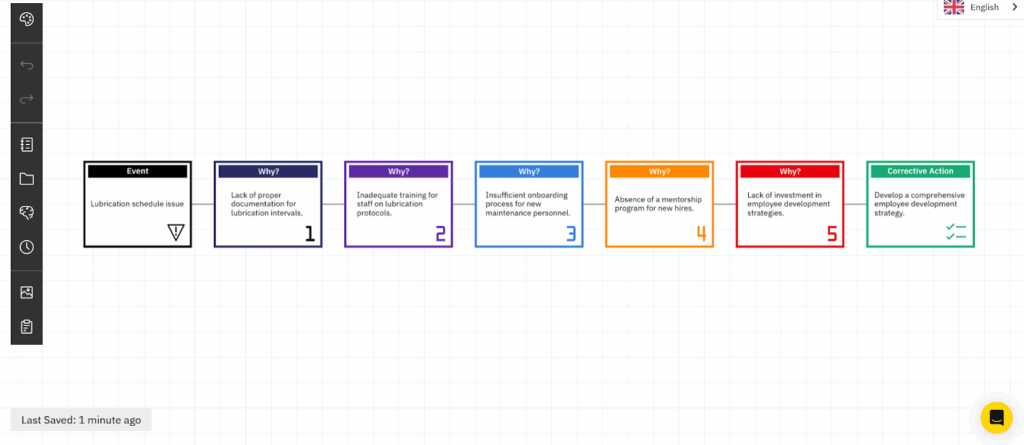
2. Fishbone (Ishikawa) Diagram
What is a Fishbone Diagram?
A Fishbone Diagram visually maps potential causes of a problem across categories like People, Process, Equipment, Materials, and Environment. It is particularly useful for complex issues with multiple contributing factors.
How EasyRCA Streamlines Fishbone Diagrams
- One-click diagram creation: Automatically generate a clean, organized fishbone framework from your initial problem statement without manual drawing tools
- Integrated cause linking: Connect related causes to uncover systemic patterns.
- Data Capture: Link evidence, notes, or supporting documents directly to each branch of the fishbone for a complete audit trail.
- Version control & history: Track edits and maintain a clear record of how the diagram evolves during the investigation.
- Reporting & export: Generate actionable reports for stakeholders.
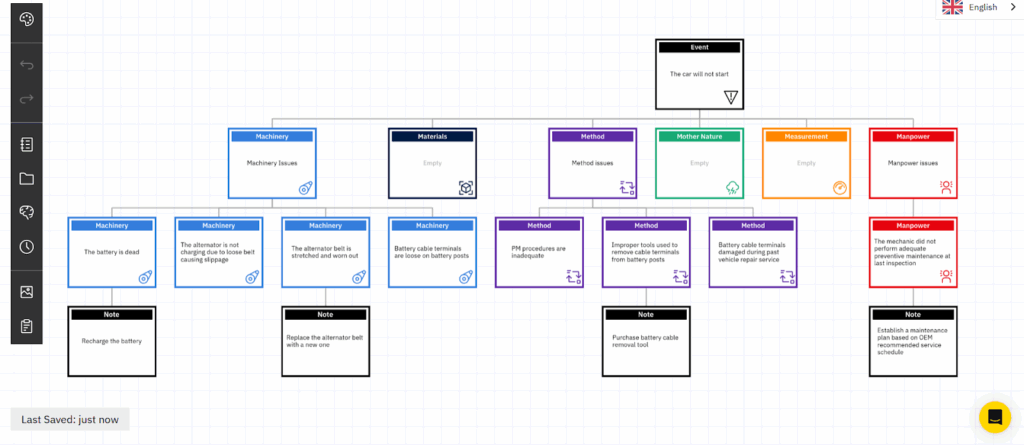
3. Fault Tree Analysis (FTA)
What is Fault Tree Analysis?
FTA is a top-down approach that starts with a primary failure event and maps all potential contributing causes using logical gates (AND/OR). It is widely used in manufacturing, as well as in high-risk industries such as aerospace, nuclear, and healthcare.
How EasyRCA Streamlines FTA
- RCA Turbo with AI: Quickly builds fault trees by suggesting likely causes and connections based on prior investigations and data patterns.
- Automated tree creation: Build fault trees from predefined templates.
- Drag-and-Drop nodes: Quickly insert and rearrange branches and events with an intuitive interface, making complex logic easy to map.
- Evidence linking: Attach data, images, or supporting documents directly to each event or gate for a fully documented audit trail.
- Task assignment and tracking: Assign and track tasks in the Fault Tree, ensuring every identified failure mode has a clear owner, deadline, and completion status.
- Version control & history: Track edits and maintain a clear record of how the diagram evolves during the investigation.
- Scenario simulation: Test “what-if” scenarios to predict outcomes before implementing changes.
- Collaboration: Multiple team members can contribute answers in real-time.
Real-World Example
A logistics company used FTA to understand why a shipment system repeatedly failed. With EasyRCA’s RCA Turbo with AI feature, the company rapidly identified a combination of software glitches and human error, enabling a permanent corrective solution in a fraction of the usual time.
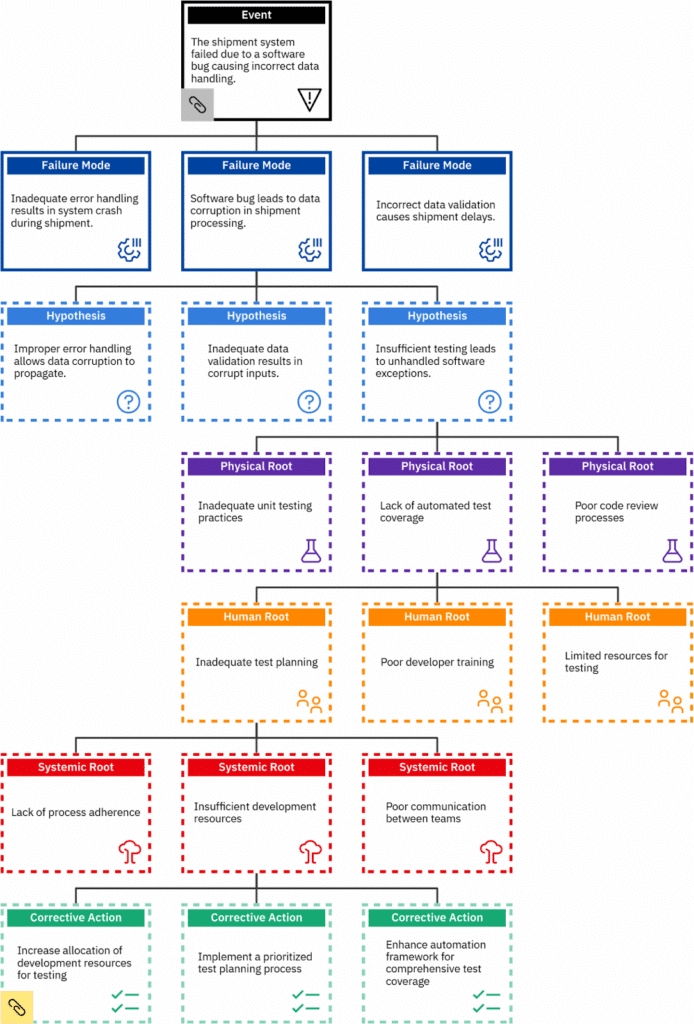
4. Pareto Analysis
What is Pareto Analysis?
Pareto Analysis, or the 80/20 rule, identifies the few critical causes that account for the majority of problems, helping teams prioritize high-impact actions.
How EasyRCA Streamlines Pareto Analysis
- Analysis of trends: With a centralized database of RCAs, it is easy to track recurring issues so you can focus resources where they matter most.
Why Root Cause Analysis Software Outperforms Manual Methods
Manual RCA using spreadsheets or templates may work for simple problems, but software like EasyRCA offers key advantages:
- AI acceleration: RCA Turbo speeds up investigations by suggesting probable causes.
- Collaboration: Multiple team members can work in real-time.
- Standardization: Ensures investigations follow consistent workflows.
- Advanced Reporting: Generates insights, trends, and visual reports instantly.
- Scalability: Supports complex problems across multiple sites or teams.
- Integrated Evidence Management – Attach photos, sensor data, maintenance logs, and other files directly to causes or events for a complete, audit-ready record.
- Automated Action Tracking – Assign tasks, set due dates, and monitor completion inside the same platform, eliminating separate task spreadsheets.
- Version Control & Audit Trail – Every edit is logged, providing full traceability for compliance and continuous improvement.
- Cross-Method Flexibility – Support for Fishbone, Fault Tree, 5-Whys, Barrier Analysis, and more—all in one workspace without switching tools.
- Data Analytics & KPIs – Aggregate results across investigations to spot recurring issues, calculate MTBF/MTTR, and track cost savings.
- Secure Cloud Access – Enterprise-grade permissions and encrypted storage protect sensitive operational data while enabling remote access.
- Knowledge Reuse – Build a searchable library of past RCAs so teams can quickly reference prior solutions and avoid repeating work.
- Integration with Existing Systems – Connect to CMMS, EAM, or ERP platforms to pull work-order data and push corrective actions automatically.
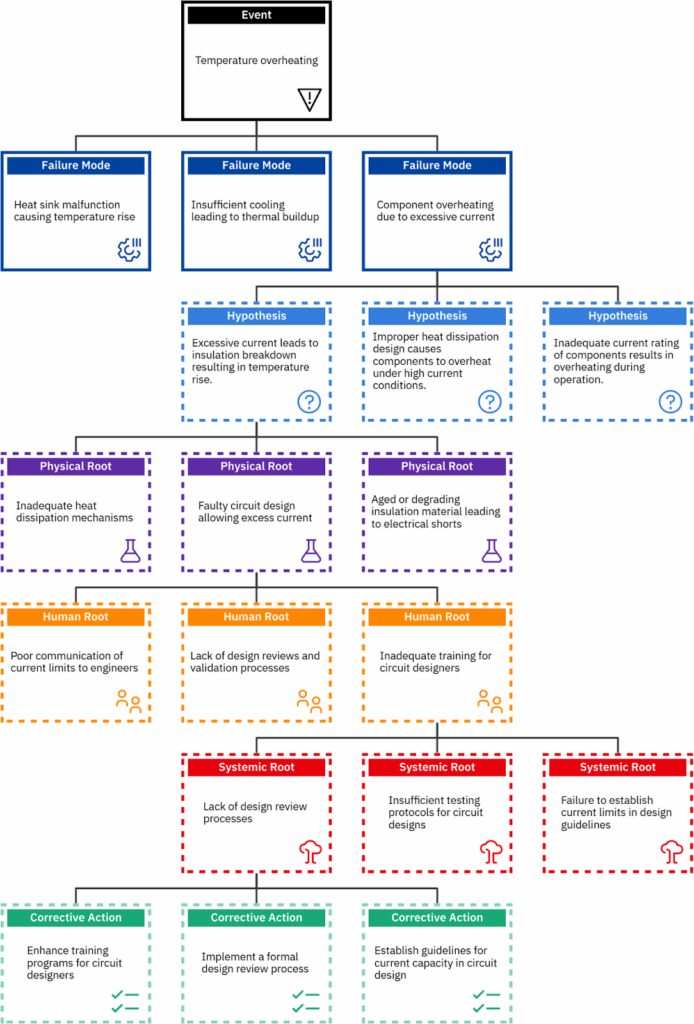
FAQ: Types of Root Cause Analysis and Software Solutions
Q1: Which RCA method is best for complex problems?
Fishbone diagrams and Fault Tree Analysis are ideal. EasyRCA supports both with RCA Turbo’s AI assisted investigation, automation, visualization, and collaborative features.
Q2: Can EasyRCA handle multiple RCA methods in a single investigation?
Yes. Teams can use multiple methods, such as 5 Whys with Fishbone diagrams or Fault Tree Analysis, to capture both root causes and contributing factors efficiently.
Q3: How does software improve RCA accuracy compared to templates?
EasyRCA helps reduce human error in data entry, enforces consistent workflows, and provides automated analysis, whereas templates rely entirely on manual input.
Q4: How can EasyRCA help with Pareto Analysis if charts aren’t native?
RCA data can be exported to our customer Power BI dashboard in order to identify trends, and prioritize actions effectively.
Q5: Does EasyRCA integrate with our existing maintenance or EAM systems?
Yes. EasyRCA can connect with CMMS/EAM platforms (like SAP PM or Maximo) to pull work-order data and push corrective actions back into your maintenance workflow, reducing double entry.
Q6: Is EasyRCA secure for sensitive operational data?
Absolutely. The platform uses enterprise-grade encryption, role-based permissions, and full audit trails to protect confidential plant and equipment information.
Q7: Can investigations be done remotely or by distributed teams?
Yes. EasyRCA’s cloud-based, real-time collaboration lets team members in different sites—or even different countries—work on the same investigation simultaneously.
Q8: Can we build a knowledge base of past RCAs?
Yes. Completed investigations are stored in a searchable library, so teams can quickly reference previous problems, solutions, and best practices.
Q9: How scalable is EasyRCA for enterprise deployments?
It supports unlimited users and sites, with centralized administration and reporting—ideal for organizations running hundreds of RCAs across multiple plants.
Understanding the different types of Root Cause Analysis is essential for any organization aiming to solve problems efficiently. While templates provide a basic framework, Root Cause Analysis Software like EasyRCA streamlines every step—from investigation to reporting—while improving accuracy, collaboration, and scalability. RCA Turbo with AI features further accelerates investigations in methods like 5 Whys and Fault Tree Analysis, enabling faster, data-driven insights.
Request a demo, download a template, or start your trial today to see how EasyRCA can streamline your root cause analysis and deliver actionable insights faster than ever.
Ignite your curiosity, subscribe now!
Stay informed and connected with the latest updates by subscribing today!

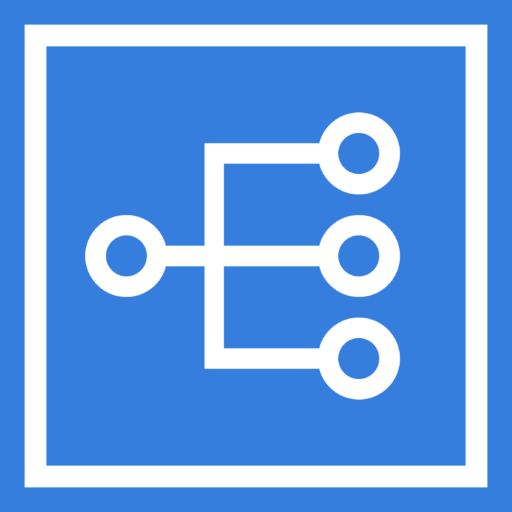
Recent Comments